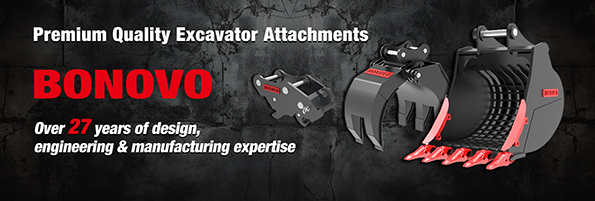1. Engine speed drops
First, the engine output power should be tested. If the engine output power is much lower than the rated power, the simplest method should be used to judge at the construction site. First, check whether the fuel filter is blocked, whether there is a leak in the fuel line, whether the plunger, fuel injector, and oil outlet valve in the fuel pump are seriously worn, whether the air filter intake is unobstructed, whether the turbocharger is damaged for engines with turbochargers, whether the engine is rapidly heated, whether the oil viscosity decreases, causing the cylinder wall to be not tightly closed and the compression ratio to decrease, whether the cylinder sleeve assembly is worn and causes serious cross-flow in the cylinder, and whether the engine valve is not tightly closed, etc. These are all factors that seriously affect the engine power. If the engine output power is insufficient, the matching problem of the flow of the hydraulic pump and the output power of the engine should be considered.
In the construction of hydraulic excavators, according to the load requirements of the operation, the speed and load (flow and pressure) are inversely proportional, that is, the product of the pump output pressure and flow is a constant, and the pump output power is constant or approximately constant; if the pump control system fails, it cannot achieve the optimized matching state of the engine-pump-valve-load in different working conditions, so that the excavator cannot work normally. Combined with the fact that modern excavators are mechanical-electrical-hydraulic integrated products with high technical content, when dealing with faults, generally start with the electrical system, then check the hydraulic system, and finally check the mechanical transmission system. When checking the hydraulic system, check step by step from the auxiliary oil circuit-control oil circuit-main oil circuit-control element.
2. Slowing down of working speed
If the excavator has been used for many years, the speed gradually slows down, which is due to normal wear and tear. The main factors are the wear of various parts of the whole machine, which causes the engine power to drop and the hydraulic system to leak. In this way, a series of faults are manifested. Due to the internal energy consumption caused by the leakage, a large amount of heat energy is generated, which causes the whole system to heat up rapidly. The viscosity of the hydraulic oil and engine oil decreases, causing the whole system to generate high temperature, which is manifested as the cool car speeds up slightly and slows down when it gets hot. This requires a full machine overhaul and the parts with excessive wear should be repaired and replaced. If the new excavator suddenly slows down, it is necessary to check the following aspects first: first check whether the circuit fuse is open or short-circuited; whether the pilot pressure is normal; whether the servo control valve-servo piston is stuck; distributor confluence failure, etc.; exclude other possibilities, and finally disassemble the hydraulic pump.
3. Excavator powerlessness
The whole machine powerlessness can be divided into several aspects. One is that the engine speed drops sharply when the external load is large, which is manifested in the following two aspects:
(1) Check the engine power first as mentioned above. It is to check whether the hydraulic displacement follows the constant power output. That is, without affecting the speed, adjust the angle of the swash plate to reduce the displacement.
(2) When the load is large, the engine does not slow down, and the system speed is normal; this requires debugging the system pressure. Since the hydraulic components and hydraulic systems used by different manufacturers are different, the pressures of each hydraulic cylinder are also different. As long as the debugging is carried out according to the standards specified by the manufacturer, it will be fine. In addition, if the pressure of the overflow valve cannot be adjusted, and the overflow valve is checked to be in good condition, it is necessary to check the hydraulic pump adjustment system, and even the cylinder body, distribution plate, plunger and other parts of the hydraulic pump.
Common faults of general excavators are manifested in the above aspects. With the increase in the use of excavators, some common faults that often occur in construction operations are generally known to users who have used excavators for more than one or two years; for example, if the excavator runs off the track, the user can immediately realize that the travel distribution oil seal (also known as the center swivel joint oil seal) is damaged; the flow of the two hydraulic pumps is different; there is a problem with one side of the travel motor. The hydraulic cylinder leaks quickly: it can be immediately realized that the safety overflow valve is not tightly closed, or the cylinder oil seal is seriously damaged, etc.
Choose BONOVO for high-quality, customizable brush cutters for skid steers with fast delivery. Contact us today to discover how our superior products can enhance your land management tasks!
for more info just visit our website at www.bonovogroup.com
contact # : +86 158 6218 2088
email : sales@bonovogroup.com
Tips on excavator maintenance
- BONOVO
- Counselor
- Posts: 655
- Joined: Oct 17th, '24, 02:50
- Location: China

